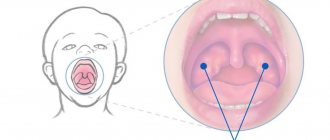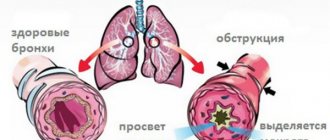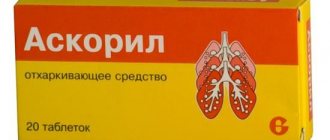Classification of stuttering
The criteria for classifying seizures are the course of the disease, its forms and clinical manifestations. The following forms of stuttering are distinguished:
- clonic - short-term convulsions follow one after another, which leads to involuntary repetition of sounds;
- tonic - speech delay occurs due to strong and prolonged muscle contraction;
- mixed - occurs due to a combination of both types of speech impairment.
Along the way, stuttering can be permanent (it constantly bothers the patient in all situations and forms of speech), wave-like (it can appear and disappear), and recurrent (after complete disappearance it begins to bother the patient again). According to clinical forms, it is customary to distinguish neurotic and neurosis-like. The first occurs due to neuroses and stress, and the second due to diseases of the nervous system.
Etiology and pathogenesis
There is a whole range of causes and risk factors that can provoke this disease. Therefore, it is possible to determine the exact etiology of the disease only in each case. The causes of the disease in adults and children differ significantly.
Stuttering in adults is extremely rarely diagnosed. One of the risk factors for the disease is hereditary predisposition. Patients are diagnosed with weakness of the central parts of speech, which, under the influence of unfavorable factors, can cause stuttering. It has also been proven that pathology occurs much more often in men than in women. This is due to the fact that in women the left hemisphere of the brain, in which Broca’s motor center is localized, is more developed.
A common cause of stuttering in adults is severe stress. Under its influence, the coordination of the muscles responsible for the production of sounds is disrupted. Their contraction and relaxation become uncoordinated, resulting in seizures. Stuttering can also be caused by diseases of the central nervous system: meningitis, encephalitis, neuroinfections, traumatic brain injuries. Brain tumors and strokes also play a big role in the development of stuttering.
In children, the main causes of pathology are mental trauma and pathologies of the central nervous system. Children who have suffered any diseases affecting the nervous system are especially prone to stuttering. Such diseases include traumatic brain injuries, intrauterine hypoxia, and infectious diseases caused by viruses. Doctors also identify risk factors for developing the disease. If such factors are present in a child’s life, any disease of the central nervous system or stress can lead to the development of pathology.
Risk factors for stuttering in children:
- The child began to speak early. Some children who are just one year old may have an extensive vocabulary. However, most children normally speak only 3-5 words. Then the vocabulary begins to be replenished very quickly with new ones; a child at the age of 1.5 years already begins to speak in whole sentences. However, the baby’s lungs and speech apparatus are not yet able to cope with the increased load, which provokes stuttering.
- Late onset of speech. Typically, such children speak their first words when they are two years old. Children begin to pronounce extended phrases at about three years of age. In this case, stuttering becomes the cause of motor disinhibition of the nervous system.
- Emotionally labile nervous system. Such children are usually extremely tearful, have poor appetite and restless sleep. Any sudden change in environment can provoke illness in children: moving to a new city, starting to attend kindergarten, or a long absence from their mother.
- Strict child rearing. Some parents arrange their child’s life according to a clear schedule, and also often punish them for the slightest missteps. As a result, the child grows up tense and fearful, afraid of disappointing his parents.
- Physical health of the baby. If a child suffers from any chronic diseases or his parents constantly limit him in something, he withdraws into himself, becomes fearful and shy.
- Hereditary predisposition.
- Mastering several languages at once. If a child learns several languages at once, especially when the parents speak different languages, then he may experience a disruption in the coordinated functioning of the speech-motor centers.
Main types of logoneurosis
Pathological type
It is congenital and in most cases is transmitted to the child at the genetic level.
Neurotic type
It manifests itself due to serious illnesses, severe head injuries, fears, stressful situations, psycho-emotional shocks that the child received in any situations.
Tonic type
It is expressed in a pause that the child makes in a word or part of a phrase. In some cases, children suffering from tonic stuttering stretch out vowel sounds.
Clonic type
It is caused by numerous repetitions (cloning) of individual syllables or letters from a certain part of the word.
Stable type
Is permanent. The child stutters continuously when pronouncing any word or phrase.
Unstable type
It does not always happen, but only in certain situations, for example, when you are in an unfamiliar place, next to strangers, in various stressful circumstances.
Cyclic type
It manifests itself in the form of attacks, that is, at some moments the baby speaks absolutely normally, and then suddenly begins to stutter.
Combined type
It is considered one of the most complex, since it combines several types of this disease: tonic, clonic, and also cyclic. But, if parents make enough efforts, it is possible to cure this disease.
There are several types of logoneurosis, the pathology develops as a result of complications during childbirth or severe stress in the child
Physiological symptoms
The main external sign of the disease is the presence of convulsions during the speech act. The duration of seizures can vary from 0.2 seconds to 90 in the most severe cases. Convulsions are divided according to their form into tonic, clonic and mixed, according to frequency and localization into vocal, respiratory, articulatory and mixed.
When stuttering, patients are usually diagnosed with breathing problems. There are three forms of such violations:
- exciratory (characterized by convulsive exhalation);
- inspiratory (convulsive inhalation);
- respiratory (convulsive inhalation and exhalation).
Violations of speech and general motor skills (tics, speech spasms, myoclonus in the facial muscles) are considered noticeable symptoms of the disease. Patients who have difficulties with pronunciation begin to use various tricks to facilitate speech and hide its shortcomings.
Reasons for appearance
The etiology of this speech disorder is not fully understood. But often the emergence of a neurotic form of stuttering is preceded by one of the following factors:
- severe fear;
- emotional instability of parents (sharp changes in attitude from affection to rudeness or assault);
- suffered a serious illness;
- physical violence or punishment;
- systematic non-compliance with the daily routine;
- threats, including within the family circle;
- premature learning of complex words;
- exceeding the permissible reading load;
- copying the stutter of a loved one.
Speech disorders arise not only due to neurological problems, but also due to genetic predisposition. You should be more attentive and careful in communication and education with children with a burdened medical history. Regardless of the cause of the condition, patients experience hypertonicity and increased excitability of the motor centers of speech. This causes characteristic changes in the conversation.
Psychological symptoms
The main psychological manifestation of the disease is a feeling of inferiority. The more the patient concentrates on his defect, the more it worsens. There are three degrees of fixation of the patient’s attention on his disease, which differ in the severity of psychological symptoms.
- It is typical for a zero degree of fixation that children do not notice their defect or do not experience disadvantage because of it. In this case, there are no attempts to eliminate the defect, the patient does not feel resentment or embarrassment due to stuttering.
- A moderate degree of fixation is observed in older schoolchildren who are embarrassed by the defect and also try in every possible way to hide it.
- With a pronounced degree of fixation, the child suffers from a feeling of inferiority, concentrates on his own problem and is afraid to communicate with other people.
Diagnosis of stuttering
To make a diagnosis, the doctor pays attention to the presence of the following main signs of the disease in the patient: hesitation and difficulties during the pronunciation of words, disturbances in the rhythm of speech, which is manifested by repetition of syllables, fragments of words, prolongation of sounds, as well as attempts to eliminate stuttering with the help of tics or grimaces. Diagnosis of the disease is carried out by a speech therapist and a neurologist. The doctor may also need to exclude organic diseases of the nervous system, which involves conducting an MRI and EEG of the brain, as well as rheoencephalography.
Method of examining a child
If any of the above symptoms occur, you should immediately contact a qualified specialist. The disease can be cured only if parents treat their child’s problem responsibly and carefully. To make an accurate diagnosis, the following types of comprehensive examination will be needed:
- consultation with a neurologist;
- appointment with a psychiatrist;
- speech therapy examination;
- examination by a speech pathologist;
- conversation with a child psychologist;
- MRI (magnetic resonance imaging) of the brain;
- EEF (electroencephalography).
the child must undergo a comprehensive examination, go for a massage and do exercises with a speech therapist
Complications of stuttering
Stuttering is accompanied by various complications. A child who stutters begins to avoid speech situations, as a result of which his social circle narrows. As a result, he becomes suspicious, wary, shy, and acutely feels the difference between himself and his peers. In suspicious children, the feeling of their own inferiority gradually worsens.
As the child grows up, he becomes fearful and irritable, which depresses the psyche and thereby further aggravates the disease. Problems with social adaptation inevitably lead to deterioration in school performance. Frequent complications of stuttering are fear of speech (logophobia) and fear of pronouncing certain sounds (audiophobia).
History taking
The medical history includes the following information:
- health status and presence of speech disorders in parents and immediate relatives,
- analysis of the child’s overall development,
- the presence of diseases in the mother during pregnancy and injuries during childbirth,
- stress and physical trauma in childhood,
- speed of speech formation,
- conditions of education (type of institution and the child’s adaptation to it, learning two or more languages, communication with children who have speech defects),
- psychological climate in the family (conflicts, excessive guardianship, attitude of family members towards the child’s defect),
- the presence of diseases of the organs of vision and hearing.
Treatment for stuttering
A speech therapist will help the patient eliminate the speech defect. However, if seizures occur due to damage to the central nervous system, a neurologist should treat the pathology. A psychologist will help you get rid of stuttering caused by a traumatic situation. The basis of treatment for stuttering is the restoration of normal functioning of the speech circle, especially the inhibition of Broca's center.
Treatment for stuttering includes a whole range of techniques:
- drug therapy;
- acupuncture;
- performing speech therapy exercises;
- breathing exercises;
- hypnosis and others.
All these techniques are aimed at solving different problems. In particular, hypnosis allows us to identify the underlying causes of pathology. However, this method is not used to treat children.
There are no special medications to treat stuttering. Drug therapy is usually prescribed only as an adjunctive treatment. The patient may be prescribed the following groups of drugs: tranquilizers, nootropic medications, sedatives, anticonvulsants and homeopathic tablets.
Acupressure massage has shown its effectiveness in getting rid of stuttering. It is used as a calming method.
Breathing exercises involve the formation of normal speech breathing. The child learns to take a correct, extended breath, which allows him to stock up on enough air to pronounce a long phrase. Logorhythmic exercises, which include singing, muscle relaxation, articulation exercises, and breathing exercises, will help compensate for speech defects.
The help of parents plays a huge role in the treatment of the disease. Parents need to be patient and try to follow the following recommendations that will help the baby get rid of the speech impediment:
- Correct communication. You need to try to talk to your child calmly, smoothly, slowly, and pronounce all the words clearly. It is advisable to ask your child questions to which he can give a simple answer.
- Daily regime. A good night's sleep (at least 8 hours), as well as avoiding computer and active games in the evening, will help the child cope with the disease.
- Proper nutrition. Parents should monitor their child's diet. It should be dominated by dairy and plant foods. It is necessary to limit sweets, salty, fried and spicy foods.
- Maintain safe speech patterns. In the early stages of treatment, parents should give the child only books that are familiar to him, and not ask him to retell what he has read or learn poems. It is better to leave all these activities for a later date.
It is much more difficult for adult patients to get rid of the disease than for children. It will require painstaking work and strict adherence to all doctor’s recommendations. The patient should regularly perform speech therapy exercises, keep a diary of his speeches, and also try to take the initiative in communication more often in order to get rid of fear and feelings of inferiority due to his speech impediment.
What correction methods exist?
The very first method of overcoming stuttering was developed by N.A. Vlasova and E.F. Rau. The authors took as a basis the level of mastery of independence in speech activity.
At the same time, classes are held to develop a sense of rhythm and musical exercises, as well as explanatory conversations with parents.
N.A. Cheveleva proposed eliminating signs of logoneurosis in the process of the child’s practical activities. The technique is that children gradually move from visual forms of speech to abstract ones. The statement is based on a visual situation (for example, making a craft).
As manual activities become more complex and the number of elements of work increases, speech also becomes more complex:
- First, the child learns to hear correct speech.
- Then it’s time for the accompanying speech. Children comment on their actions in making crafts.
- Children practice their final speech when describing a finished product.
- People who stutter learn to pre-speak when they talk about their intentions.
- Strengthening independent speech skills. Here, children will have to talk about the entire process of making crafts and answer questions from a speech therapist.
This technique is suitable for classes with both preschoolers and primary schoolchildren.
Breathing and articulation gymnastics
Gymnastics exercises for the articulatory apparatus train the muscles of the oral cavity. The gymnastic complex includes the development of the tongue, lips, mobility of the cheeks, pharynx and palate.
It is recommended to perform gymnastics in front of a mirror to control the correct position of the speech organs. Exercises should be performed regularly.
Breathing exercises help to create a long air flow and correct speech breathing.
Development of speech breathing during stuttering, video lesson:
Logorhythmic techniques
Speech therapy rhythms help overcome speech disorders by developing the child’s motor skills in combination with verbal and musical accompaniment.
The idea of logorhythmic exercises is based on the fact that all life processes have their own rhythms. Rhythmic movements activate brain activity.
Speech therapy massage
Massage is carried out before all other measures of speech therapy. Massage movements cover not only the oral cavity, but also the area of the head, neck, and shoulder girdle.
There are two techniques of speech therapy massage – segmental and acupressure. The first includes movements such as stroking, rubbing, kneading, and vibration.
Acupressure is based on the action of biologically active points. Pressing them causes a reflex response in certain organs and muscles.
Prognosis for stuttering
It is quite difficult to predict the outcome of the disease, since a variety of factors can provoke it. Not all of them can be easily and quickly eliminated. In many ways, the prognosis of stuttering depends on its form and the age of the patient. It has been proven that the younger the patient, the greater his chances of a full recovery. However, children who become ill due to congenital characteristics of the speech apparatus still have a low chance of recovery.
The type of course also influences the outcome of the disease. In particular, respiratory spasms are relatively easy to treat, and clonic forms of the disease pass faster than tonic ones. The most favorable age for treatment of pathology is considered to be 3-5 years. It is most difficult for children aged 12 to 17 to get rid of stuttering. Speech therapy has also recorded cases of relapse of the disease when exposed to unfavorable factors.
Prevention of stuttering
In speech therapy, it is customary to distinguish two groups of methods for preventing the disease: strengthening the child’s immunity and organizing his speech development. To maintain and strengthen the baby’s health, it is extremely important to follow a daily routine, good nutrition, physical activity, and proper hygiene. In order for the nervous system to function correctly, it is necessary to protect it from unnecessary overload and monitor normal sleep and wakefulness.
The child’s speech development should be aimed at expanding his horizons, ideas about objects and phenomena surrounding him. It is also important that the child learns the correct pronunciation of sounds, the tempo of speech and its rhythm. You can also avoid stuttering by preventing speech hesitations and teaching your child to speak smoothly and express his thoughts logically.











